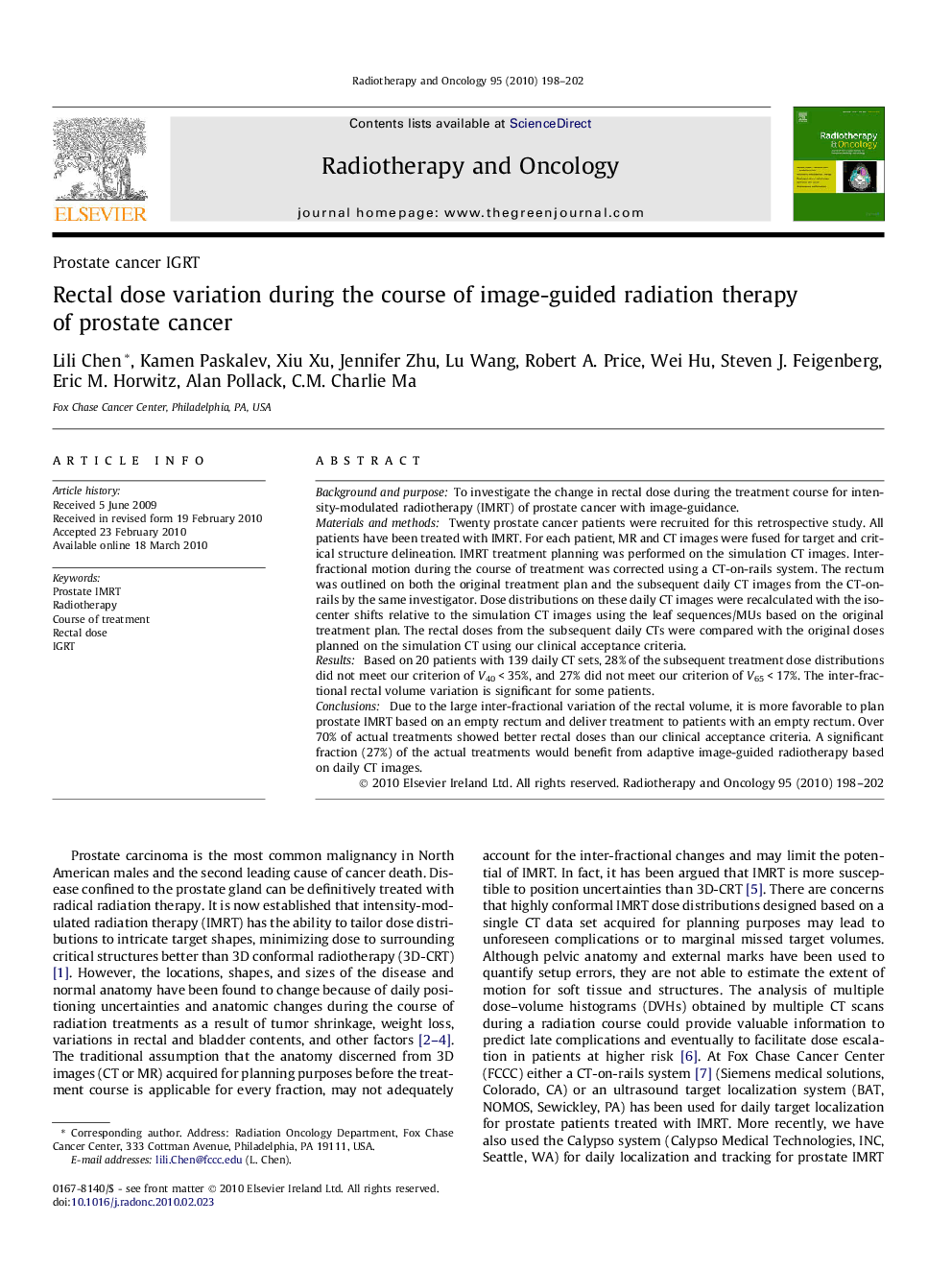| Article ID | Journal | Published Year | Pages | File Type |
|---|---|---|---|---|
| 2159407 | Radiotherapy and Oncology | 2010 | 5 Pages |
Background and purposeTo investigate the change in rectal dose during the treatment course for intensity-modulated radiotherapy (IMRT) of prostate cancer with image-guidance.Materials and methodsTwenty prostate cancer patients were recruited for this retrospective study. All patients have been treated with IMRT. For each patient, MR and CT images were fused for target and critical structure delineation. IMRT treatment planning was performed on the simulation CT images. Inter-fractional motion during the course of treatment was corrected using a CT-on-rails system. The rectum was outlined on both the original treatment plan and the subsequent daily CT images from the CT-on-rails by the same investigator. Dose distributions on these daily CT images were recalculated with the isocenter shifts relative to the simulation CT images using the leaf sequences/MUs based on the original treatment plan. The rectal doses from the subsequent daily CTs were compared with the original doses planned on the simulation CT using our clinical acceptance criteria.ResultsBased on 20 patients with 139 daily CT sets, 28% of the subsequent treatment dose distributions did not meet our criterion of V40 < 35%, and 27% did not meet our criterion of V65 < 17%. The inter-fractional rectal volume variation is significant for some patients.ConclusionsDue to the large inter-fractional variation of the rectal volume, it is more favorable to plan prostate IMRT based on an empty rectum and deliver treatment to patients with an empty rectum. Over 70% of actual treatments showed better rectal doses than our clinical acceptance criteria. A significant fraction (27%) of the actual treatments would benefit from adaptive image-guided radiotherapy based on daily CT images.
